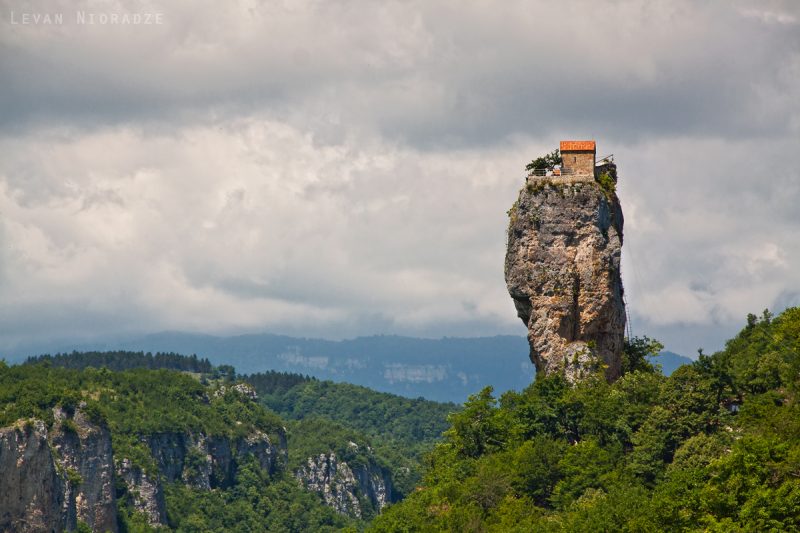There is a small village called Katskhi in the west Georgian region of Imereti, and in this village, there is a 130ft tall rock. On this rock sits a church with a single monk living inside.
The rock is called the Pillar of Life by the locals who believe it to be a symbol of the True Cross which has spawned many legends. It was not climbed or investigated until 1944, but finally in 1999 more time and effort was put into studying it.
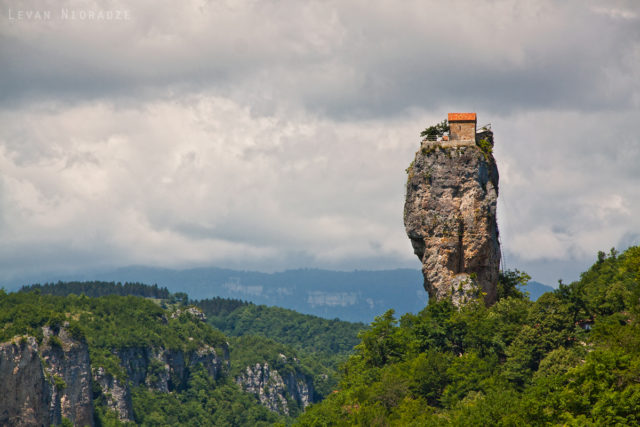
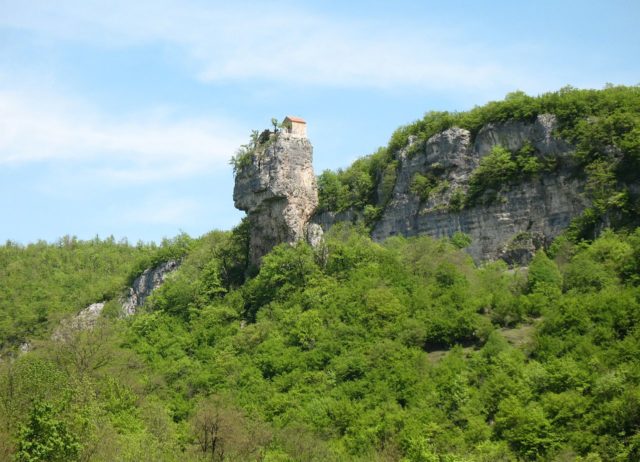
The complex on the top of the pillar consists of a church dedicated to Maximus the Confessor, a wine cellar, crypt, three hermit cells and a curtain wall. At the base of the rock, there is the newly built church of Simeon Stylites.
The church of St. Maximus the Confessor sits at the south-eastern corner of the Pillar. It is a small hall that measures 4.5 x 3.5 meters; it is actually a restoration of the stone church from medieval ages. Beneath the church is the crypt.
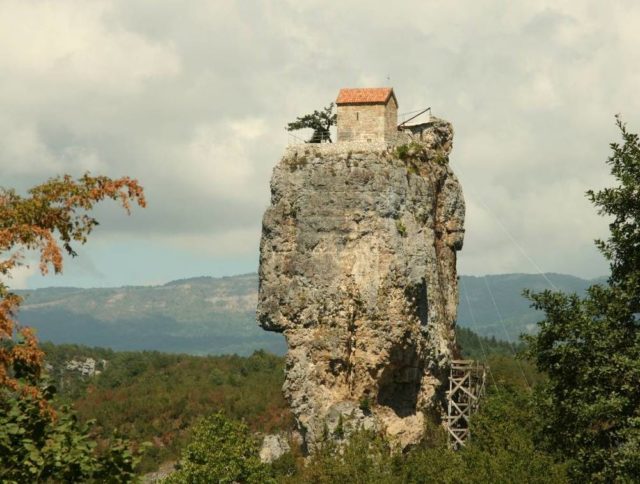
During the excavations, the team found eight vessels known as k’vevri. There is also a rectangular grotto at the entrance with two large skylights on the vertical surface of the rock.
The first documented ascent of the pillar was done by Levan Gotua and Alexander Japardize. In 1946, an architecture specialist named Vakhtang Tsintsadze said that there were two churches at the top, one from the 5th century and another from the 6th. In 1999, the pillar had undergone a deeper research. In 2006 another researcher, Giorgi Gagoshidze, re-dated the churches to the 9th and 10th century.
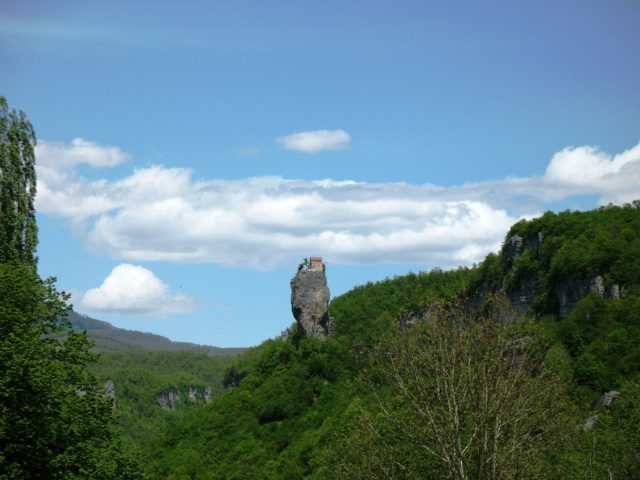
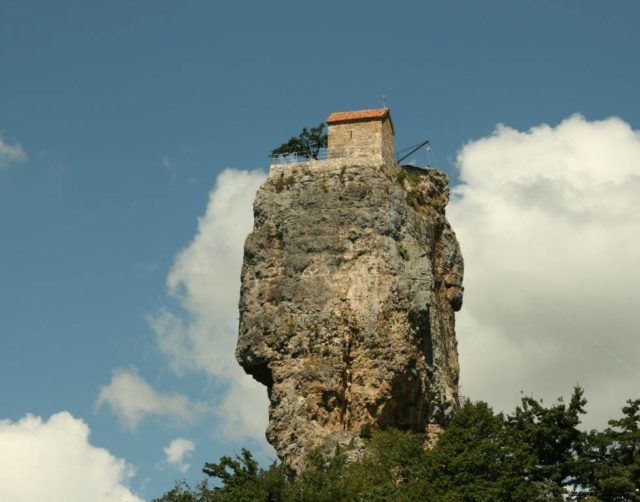
He eventually concluded that the complex was made of houses for hermits and a monastery church. When he discovered the wine cellar, he came to the conclusion that extreme asceticism had flourished there.
A limestone plate with Georgian inscriptions which date back to the 13th century revealed the name of “Giorgi”, the man responsible for constructing the hermit housing.
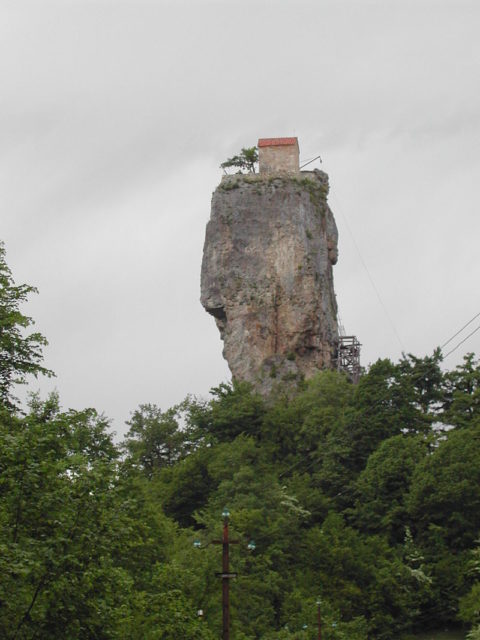
In 1995, the activity of the site started to revive. A monk by the name of Maxime Qavtaradze arrived and took over the monastery. In 2005, the monastery was gradually restored with the help of the National Agency for Cultural Heritage Preservation of Georgia.
Here is another story from us: Beautiful surviving examples of the traditional Icelandic turf house
The rock was once accessible to male visitors through an iron ladder running from its base to the top but has recently been deemed inaccessible to the public.
